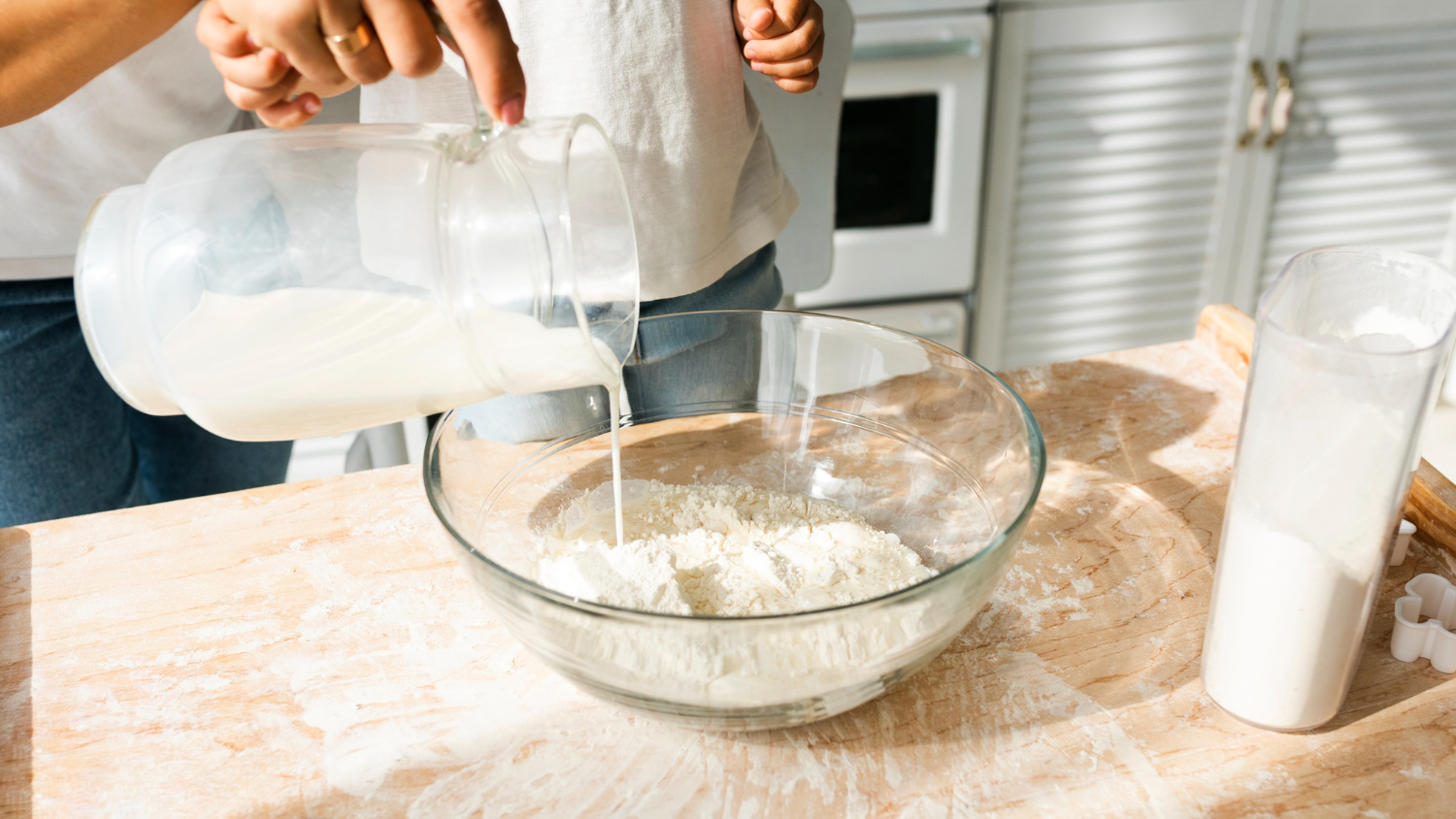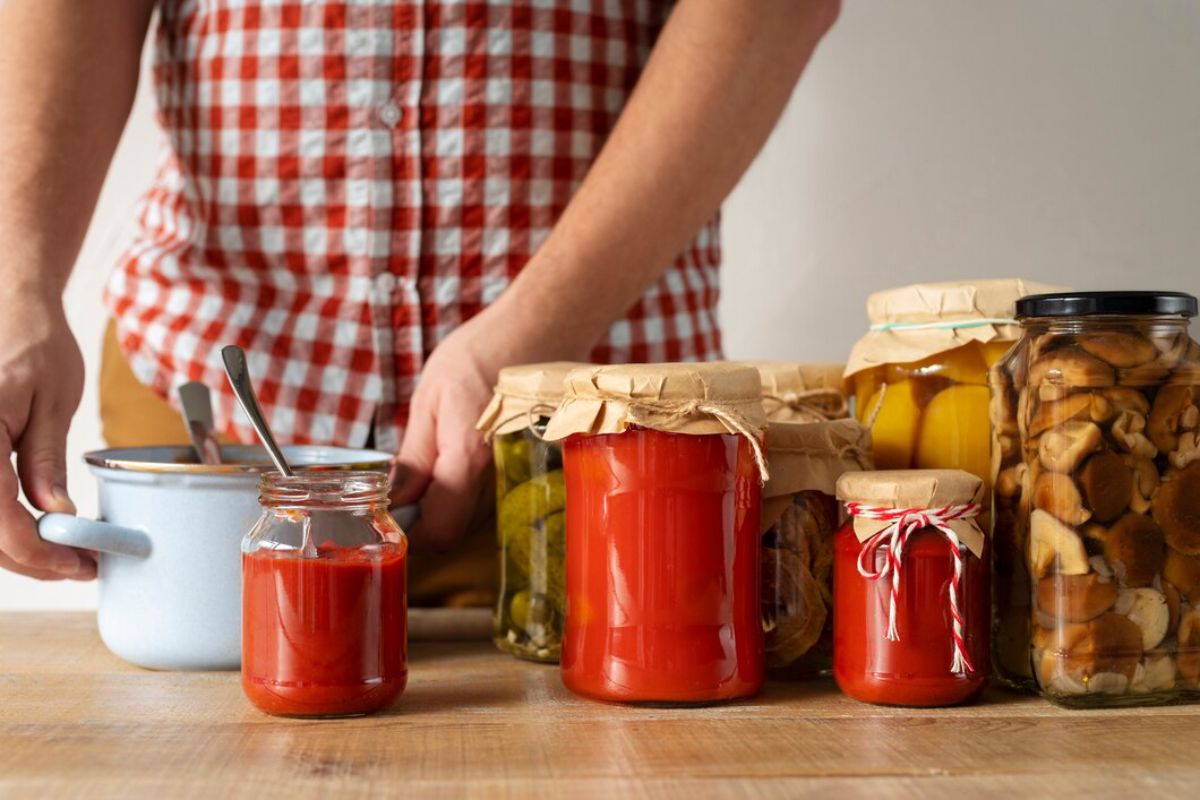
Preserving Fruits & Vegetables: Homemade Jams & Pickles
Enjoying the flavours of each season doesn’t have to be temporary — preserving fruits and vegetables allows you to enjoy nature’s bounty long after it has been harvested. These ancient techniques heighten flavour and get the most out of diminishing food assets, starting with rich, fruit-studded jams and sharp, punchy pickles. Whether you’re a first-timer or a kitchen pro, this guide will have you unlock the secrets to making bright, best pickles and oh-so-glorious homemade jams.
Why Preserve Fruits and Vegetables?
There are several reasons why preserving fruits and vegetables is beneficial:
- Minimising Food Waste: Storing fresh produce forms a protective layer to prevent spoilage, reducing food-related emissions into the atmosphere.
- Drying Saves a Lot of Money: Drying captures the season’s flavour, and bulk buying when fruits and vegetables are in season and preserving them at home is much more economical than buying off-season, imported alternatives.
- Amplifies Flavour: Pickling and jam-making amplify the natural flavours of fruits and vegetables, allowing you to indulge in those unique and complex flavours.
- Healthier Alternatives: Homemade preserves contain fewer additives, artificial preservatives, and excess sugars than store-bought versions, giving you greater control over your diet and nutrition.
- Cultural and Traditional Value: Many cultures worldwide have long-standing traditions of preserving food, such as making kimchi in Korea, chutneys in India, or marmalade in Britain. Learning these skills helps keep culinary heritage alive.
The Basics of Fruit Preservation
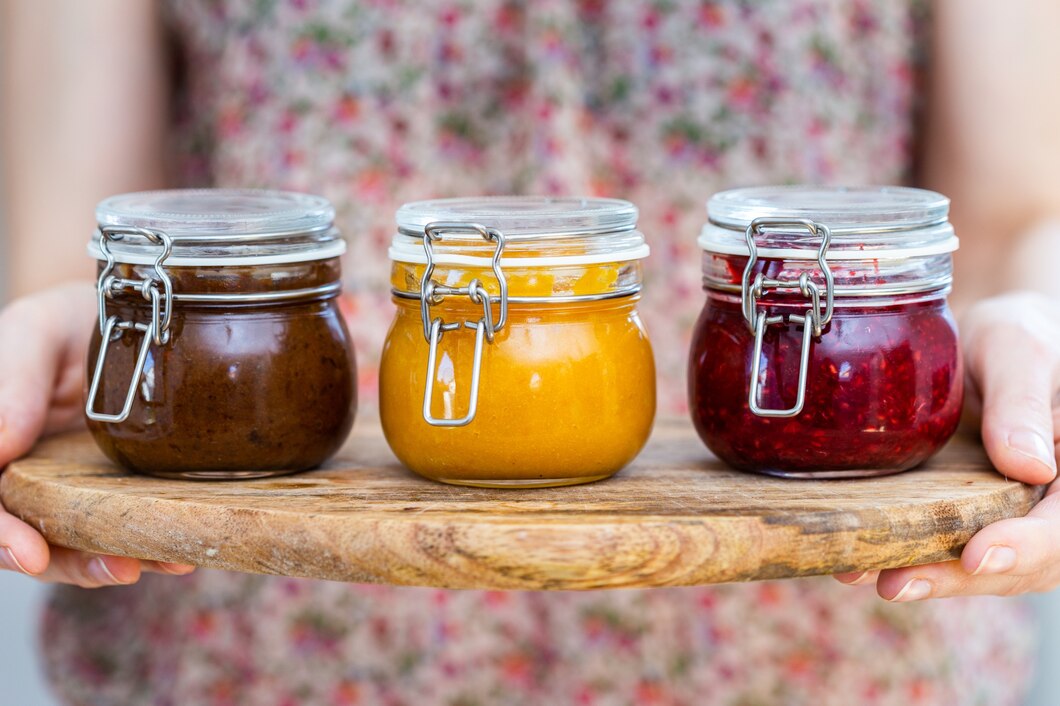
Fruit preservation can be done through various techniques, but making homemade jam is one of the most popular and delicious methods.
Choosing the Right Fruits for Jam
The best fruits for making jam include those naturally high in pectin, which helps the jam set correctly. Examples include:
- Apples
- Citrus fruits (oranges, lemons)
- Berries (strawberries, blackberries, raspberries)
- Plums
- Apricots
If using low-pectin fruits like peaches, cherries, or pears, consider adding lemon juice or commercial pectin to achieve the desired consistency. A mix of high- and low-pectin fruits can also yield a well-balanced jam with a great texture.
Essential Ingredients for Homemade Jam Recipes
To make a simple homemade jam, you’ll need:
- Fresh fruit (chopped or mashed)
- Sugar (helps with preservation and enhances sweetness)
- Lemon juice (provides acidity and a pectin boost for setting)
- Pectin (optional, depending on the fruit used and desired texture)
- Spices (optional, such as cinnamon, vanilla, or cloves to add depth of flavour)
Step-by-Step Homemade Jam Recipe
- Prepare the fruit: Wash, hull, and chop the fruit into small pieces. Removing seeds and tough skins is crucial to ensuring a smooth jam.
- Combine ingredients: In a large pot, mix the fruit, sugar, and lemon juice. Let the sugar sit for 15-30 minutes to draw out natural juices.
- Cook the mixture: Bring to a gentle boil, stirring frequently to prevent sticking. Simmer for 20-40 minutes, depending on the fruit.
- Test for setting point: Place a spoonful on a cold plate; if it wrinkles when pushed, it’s ready. If it’s too runny, continue cooking and retest after a few minutes.
- Sterilise jars: Boil glass jars in hot water for 10 minutes to prevent bacterial growth.
- Fill and seal: Pour hot jam into jars, leaving a small gap at the top. Wipe the rims, then seal tightly.
- Proper storage: Store in a cool, dark place. Refrigerate once opened and consume within a few weeks.
The Best Ways to Pickle Food
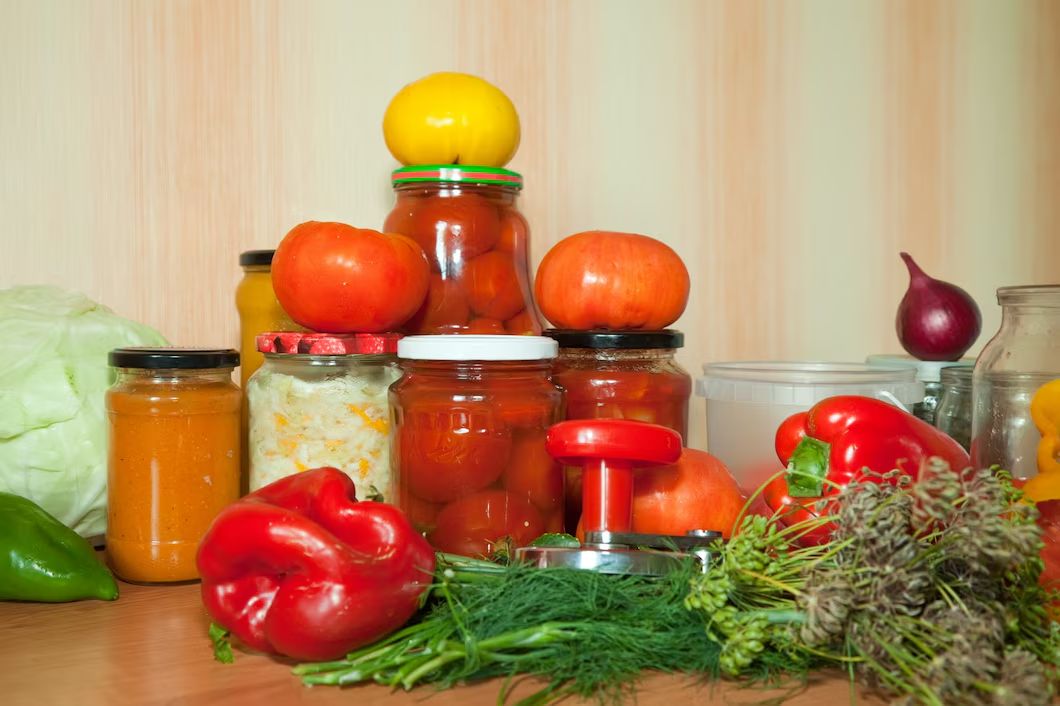
Pickling is another excellent method of preserving vegetables, adding taste and longevity to fresh produce.
Types of Pickling
- Vinegar Pickling: Preserve vegetables using an acidic solution (vinegar, salt, sugar, and spices). The acidity prevents bacterial growth, making the pickles safe for long-term storage.
- Fermentation Pickling: Uses natural bacteria and salt to create lactic acid, which preserves food (e.g., sauerkraut, kimchi, traditional dill pickles). This method enhances gut health due to its probiotic content.
Best Vegetables for Pickling
Some vegetables hold up better to pickling than others. The most commonly pickled vegetables include:
- Cucumbers (for classic pickles)
- Carrots (great for crunchy pickles with a touch of sweetness)
- Onions (ideal for sandwiches and salads)
- Cauliflower (pairs well with mustard seeds and turmeric for a spiced pickle)
- Green beans (a delicious, crunchy addition to any pickle mix)
- Radishes (adds a peppery bite to your preserves)
Simple Pickling Recipe
- Prepare the vegetables: Wash, peel, and slice as needed. Keeping the vegetables uniform in size ensures even pickling.
- Make the brine: Boil a mixture of vinegar, water, salt, and sugar with your choice of spices (such as garlic, mustard seeds, dill, or chilli flakes for extra heat).
- Pack the jars: Sightly place the vegetables into sterilised jars, layering them with additional flavouring agents like bay leaves or peppercorns.
- Pour the brine: Cover the vegetables thoroughly with the hot brine, ensuring no air pockets remain.
- Seal and store: Close jars tightly and let them cool. Refrigerated pickles can be eaten within 24 hours, but their flavours improve after a few days. Fermented pickles may need a few weeks to develop their full flavour.
Tips for Long-Lasting Preserves
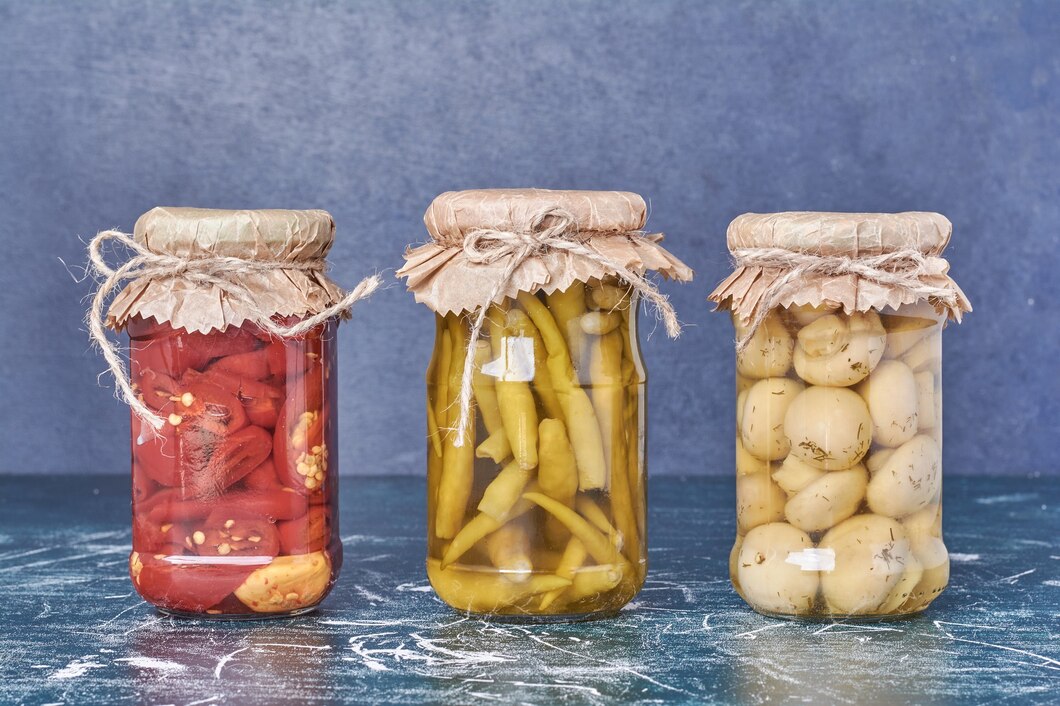
- Use sterilised jars: Ensure you wash jars thoroughly to prevent contamination that can spoil your food.
- Label and date: Note the date each batch was made so you can track when to use them.
- Store in a cool, dark place: It prevents spoilage and maintains freshness long-term.
- Look for spoilage: If these preserves communicate mould, an off smell, or bubbling, it is a sign of fermentation gone awry, and they must go.
Enjoy the Flavours of Preserved Fruits and Vegetables Year-Round
Jams and pickles are excellent ways to preserve fruits and vegetables in a given season and enhance their flavour. With the right recipes and methods, your favourite produce can be enjoyed year-round. Whether you want easy recipes for homemade jam or how to pickle food best, working with different fruits, vegetables, and spices can make a day spent preserving special tools look like a scavenger hunt.
So get started preserving fruit today and enjoy the delicious fruit for months! So whether you give beautiful homemade fruit preserves to your loved ones or enjoy them yourself, these classic techniques will get you the most out of your darling pleasures of nature.

